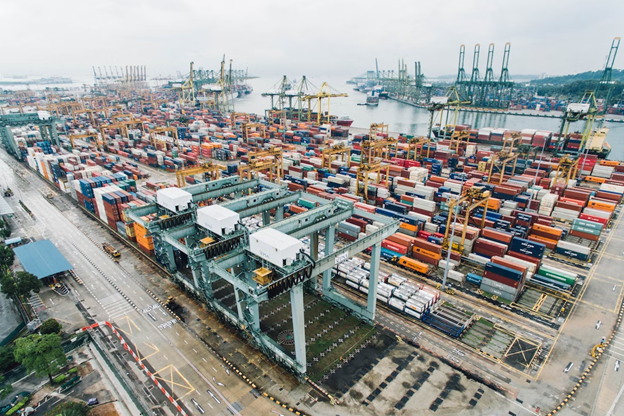Shipping Made Simple: How to Transport Temperature-Sensitive Items
Jeanicka Rhey
April 27th, 2023

Shipping temperature-sensitive items can be challenging. It's important to get it right, as some items, like food, medication, and electronics, can be damaged or rendered useless if not kept within their ideal environment. Whether you're a business owner shipping products or an individual moving to a new home, following best practices for packing and transportation is crucial. In this article, we'll discuss how to transport temperature-sensitive items safely and effectively. We'll also discuss several common mistakes to avoid.
Packaging Materials for Temperature-Sensitive Items
Before packing your items, it's important to choose the right packaging materials. Insulated containers and temperature-controlled packaging can help maintain the appropriate temperature during transportation. Here are some examples of packaging materials suitable for temperature-sensitive items:
● Insulated shipping boxes:
These boxes are made with thick layers of insulation to keep the contents cool or warm, depending on the item's requirements.
● Coolant packs:
These reusable packs can be frozen and placed inside the packaging to help maintain the desired temperature.
● Temperature-controlled pallets:
These pallets can maintain a specific temperature and are ideal for transporting larger quantities of temperature-sensitive items.
Packing Temperature Sensitive Items: Tips and Tricks
Properly packing your temperature-sensitive items is essential to prevent damage during transportation. Follow these steps to ensure that your items are packed securely:
Step 1: Choose the right size of packaging.
Make sure the container or box is large enough to accommodate the item and the necessary insulation materials. The packaging should be snug, but not too tight, to prevent damage from pressure.
Step 2: Use proper packing materials.
Use packing materials like bubble wrap, foam, or air pillows to provide additional insulation and prevent the items from shifting during transportation.
Step 3: Seal the package securely.
Make sure to use strong tape to seal the package, as this will prevent air exchange and help maintain the temperature inside the container.
Step 4: Label the package.
Clearly label the package with "Temperature Sensitive" and indicate the required temperature range to ensure proper handling during transportation.
Transportation Methods: Keeping Your Items Cool (or Warm!)
Selecting the appropriate transportation method is crucial for the safe transport of temperature-sensitive items. It's important to consider factors such as distance, transit time, and the specific temperature requirements of your items when choosing a transportation method. Here’s a list of options you should know about:
Option 1: Refrigerated trucks.
These vehicles are designed to maintain a specific temperature, making them an ideal choice for transporting items over land. Refrigerated trucks come in various sizes, from small vans for local deliveries to large trailers for long-haul transportation. They can maintain temperatures ranging from freezing to room temperature, ensuring the safe transport of your items.
Option 2: Temperature-controlled air cargo.
For longer distances or international shipping, using air cargo specifically designed for temperature sensitive items is a great option. Many airlines offer temperature-controlled cargo services, with dedicated sections of the aircraft that maintain consistent temperatures throughout the flight. This option is particularly useful for time-sensitive items, such as perishable food or pharmaceutical products, as air transportation is typically faster than other methods.
Option 3: Climate-controlled ocean freight.
If you're shipping large quantities of temperature-sensitive items internationally, climate-controlled ocean freight may be a suitable choice. Containers with built-in temperature control systems can maintain the required temperature for your items during the voyage, providing a cost-effective solution for bulk shipments.
Option 4: Temperature-controlled courier services.
For smaller shipments or door-to-door deliveries, temperature-controlled courier services can be a convenient option. Many courier companies offer specialized services for temperature-sensitive items, such as same-day delivery, overnight shipping, and real-time temperature monitoring. This option is ideal for businesses that need to deliver items quickly and efficiently to their customers.
Option 5: Temperature-controlled rail transportation.
In some regions, temperature-controlled rail transportation can be an efficient and environmentally friendly option for transporting temperature-sensitive items. Railcars with climate control systems can maintain the required temperature throughout the journey, making this method suitable for large shipments or long-distance transportation.
Monitoring the Temperature: Stay in Control
Temperature monitoring during transportation is essential to ensure that your items remain within the correct temperature range. Data loggers and temperature monitoring systems can help you keep track of the temperature inside the packaging, and alert you if the temperature falls outside of the desired range. These tools can provide valuable insights and help prevent potential damage to your items.
Common Mistakes to Avoid
To make moving easier, it's important to avoid some common mistakes that could result in damage or loss of product:
● Using inadequate packaging materials:
Failing to use proper insulation and packing materials can result in temperature fluctuations that could damage your items.
● Failing to monitor the temperature during transportation:
Without proper temperature monitoring, you won't know if your items are being exposed to potentially damaging temperatures.
If your items need to be stored during transportation, make sure to consider the storage conditions and plan accordingly.
Conclusion: The Importance of Proper Transportation
Properly transporting temperature-sensitive items is essential to ensure their safety and effectiveness. By choosing the right packaging materials, packing your items securely, selecting the appropriate transportation method, and monitoring the temperature during transportation, you can greatly reduce the risk of damage to your items.
Looking For a Reliable And Affordable Storage Solution For Your Temperature Sensitive Items? Look no further than Bargain Storage!
With our expert guidance and top-notch facilities, we can help you store your items safely and efficiently. Don't hesitate – give us a call at (972) 442-6747 or send us an email at wylie@bargainstorage.com to discuss your storage needs and find the perfect solution for you.
Storage Tips & Local News | Bargain Storage Blog
